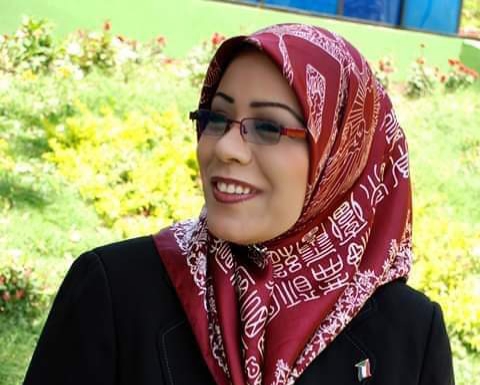Transitional Justice (1/2)

By Dr. Inas Mohamed Ahmed
The concept of transitional justice emerged in response to growing international interest in addressing serious human rights violations in post-war phases and the transition to peace and freedom. Countries emerging from wars and conflicts often face various crimes and violations that become evident after the war ends, making the reckoning of the war burdensome for both the state and the citizens.
With the development of events, the concept of transitional justice expanded to include many legal disciplines, judicial and non-judicial mechanisms, as well as political, cultural, developmental, economic, social, historical, and ethical fields, thus encompassing all aspects of life. But the question remains: when did the concept of transitional justice emerge, and how did it develop? There are several opinions on this matter. One view suggests that transitional justice was shaped by the changes that occurred in Eastern Europe, Latin America, and some African countries, particularly in relation to the transition to democratic paths. This view is supported by scholars of international relations, who believe that transitional justice emerged from these pivotal political changes.
Another opinion suggests that transitional justice originated from the Nuremberg Trials in 1945, where the victorious nations of World War II expanded the scope of criminal law to allow the prosecution of military and political leaders from the Nazi and Japanese regimes, focusing not only on their political backgrounds but also on the crimes committed. This had a profound impact on highlighting the criminal aspect and focusing on the idea of criminalizing actions and the subsequent trials, using the Genocide Convention as a legal reference. It also brought attention to the excesses of the defeated regimes, thereby enhancing legal awareness at the international level. From this point, the concept of transitional justice flourished and became a subject of academic research in international law. This direction was adopted by international law scholars, who enriched the legal system with numerous opinions until they concluded that transitional justice could be defined as “a reconciliation process sought by society through the reconfiguration of justice and the establishment of the rule of law, in a manner that acknowledges human rights violations and holds the perpetrators accountable.”
This definition presents us with a concept linked to two key variables:
- That society and the state are in a transitional phase, either from armed conflict to peace, or from authoritarian rule to democratic governance. In other words, society moves from a negative state to a positive one.
- That human rights violations have occurred, necessitating intervention to remove the consequences of these violations and hold the involved parties accountable, in order to achieve the rule of law.
A third view holds that the political transformation in several countries during the Cold War and up to the 1980s, which revealed numerous internal conflicts and crimes against humanity, led to the creation of truth commissions. The first such commission was established in Uganda in 1974 under the name of the Forced Disappearance Investigative Commission, followed by Bolivia in 1982, and Argentina in 1983 to investigate forced disappearances during the military dictatorship in Argentina between 1976 and 1983.
During this time, widespread popular movements supported by civil society organizations and national leaders emerged in several countries. For instance, in South Africa, lawyer and politician Alex Borin promoted his country’s experience with transitional justice. In 2000, he met with a group of human rights activists, including legal expert Priscilla Haines, and they founded the International Center for Transitional Justice in 2001. The goal was to establish an international strategy to support societies emerging from war or authoritarian rule. More than fifty countries participated in sharing their experiences and how they achieved transitional justice, not with the intent to replicate these experiences elsewhere, but to understand the factors behind their success and avoid the mistakes made.
Among the most notable of these experiences is South Africa’s, which endured nearly thirty years of armed conflict under the apartheid regime from 1960 to 1990. This was a defining period in South Africa’s political history, starting with political negotiations in 1990, followed by the drafting of a transitional constitution in 1993, and the holding of elections in 1994, in which the African National Congress won, and Nelson Mandela was elected president.
South Africa then established the Truth and Reconciliation Commission through a law passed by parliament in 1995, known as the “Promotion of National Unity and Reconciliation Act.” This aimed to end apartheid, transition the country to democratic rule, ensure the sovereignty of the people, prevent civil war, and provide reparations to victims.
Transitional justice took a new turn after the establishment of the International Criminal Tribunal for the former Yugoslavia in 1993, the International Criminal Tribunal for Rwanda in 1994, and the adoption of the Rome Statute for the International Criminal Court in 1998. These led to several peace agreements, including the Arusha Agreement and the Marcoussis Agreement in Ivory Coast. The entry into force of the Rome Statute in 2004 and the establishment of the court as a permanent mechanism to hold perpetrators of serious human rights violations accountable had a significant impact on the development of the transitional justice concept.
From the above, we arrive at a general understanding of transitional justice as the correct way to transition from war and conflict to peace and democracy. Its foundations are based on human rights principles, international humanitarian law, values of peace, justice, development, and the rule of law. It includes mechanisms for truth-seeking, prosecuting individuals involved in crimes against humanity, war crimes, and severe violations of international law, as well as methods for providing reparations to victims, institutional reform, judicial independence, and adherence to international standards of justice and fairness, all aimed at achieving reconciliation.
However, a crucial point to focus on is that transitional justice depends on the society’s willingness to heal from the legacy of grave crimes and human rights violations. While every society has its own uniqueness and circumstances, difficult and unified questions must be answered, including determining when the transitional justice process should begin, its timing, and its approach to ensure a just future that respects the law, acknowledges past crimes, confronts them, and provides reparations. At its core, transitional justice primarily concerns the victims, their rights, and dignity, asserting that they are the rightful owners of justice first and foremost.
Therefore, the process of transitional justice must be based on four key points:
- It should be context-specific, based on the unique events and priorities of each country.
- National authorities must lead the transitional justice initiatives, participate in their design and implementation, acknowledge them, and provide reparations for victims, while also establishing a shared vision for the future.
- Victims and affected communities must be involved in the creation of transitional justice mechanisms and their practical implementation.
- Perpetrators must be held accountable under the law, with guarantees to prevent the recurrence of violations in the future, alongside institutional and constitutional reforms of the state.
— From the website “Al-Muhaqiq”



